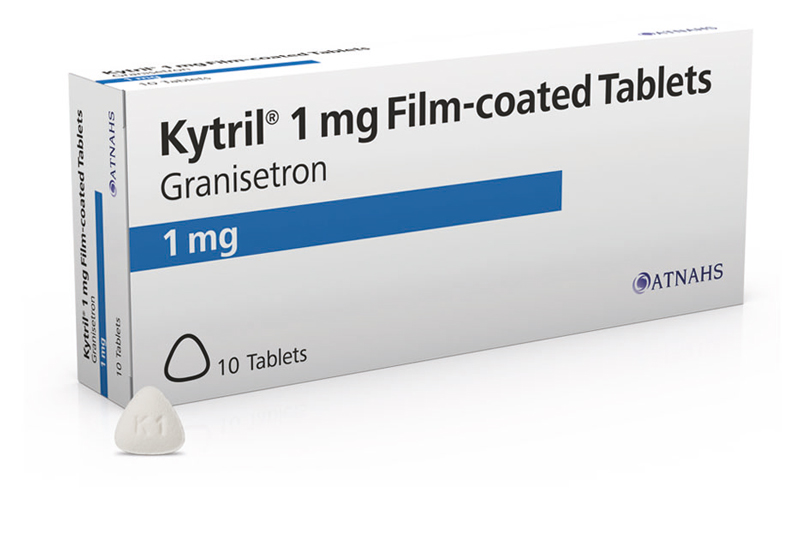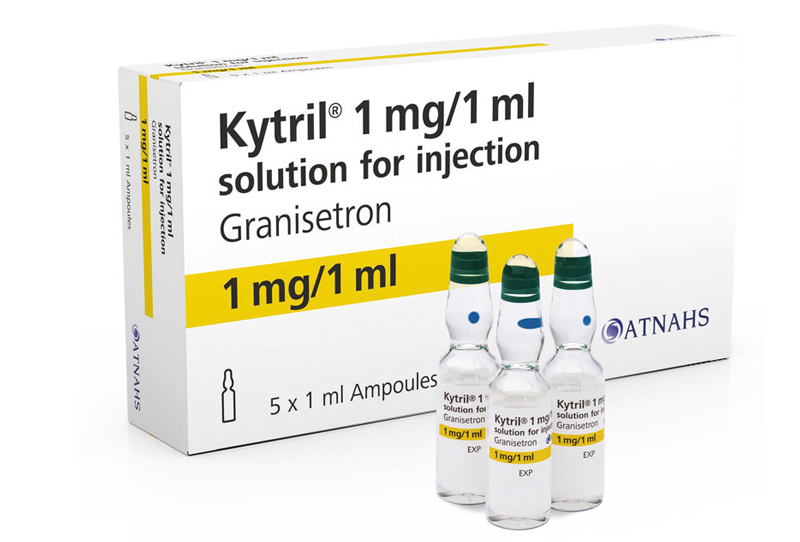- The proportion of patients with >5 emetic
episodes over the 4 days was significantly less in
the Kytril group (0%; p<0.01) but not in the
ondansetron group (20%), vs. the control
group (55.6%)8
Kytril 2 mg/ml (administered as two 1 mg tablets, n=18) was given once
daily, 1 h prior to the administration of the first daily fraction of
radiation. Ondansetron 8 mg (n=15) was given 1.5 h prior to every
fraction of radiation (three times daily for days 0 to 3 and twice daily on
day 4). Control did not receive a 5-HT3-receptor antagonist, (n=90)8. All
patients had a diagnosis of either malignant disease or aplastic
anaemia, and were hospitalised to receive 11 fractions each of 120 cGy
of radiation over the course of 4 days for a total radiation exposure of
1320 cGy prior to bone marrow transplantation and the initiation of
any conditioning chemotherapy.8
 -->
-->

